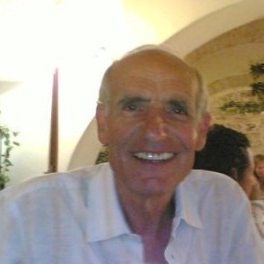Transport Mechanisms of Mitochondrial Membrane Proteins
A special issue of International Journal of Molecular Sciences (ISSN 1422-0067). This special issue belongs to the section "Molecular Biology".
Deadline for manuscript submissions: closed (15 April 2024) | Viewed by 13185
Special Issue Editors
Interests: functional proteomics; membrane proteins; membrane transport; mitochondrial carrier biogenesis; mitochondrial carrier diseases; mitochondrial carrier identification; mitochondrial carrier transcriptional regulation; mitochondrial transport proteins; structure/function relationship; transport mechanism
Special Issues, Collections and Topics in MDPI journals
Special Issue Information
Dear Colleagues,
A Special Issue on “Transport Mechanisms of Mitochondrial Membrane Proteins” is being prepared for the International Journal of Molecular Sciences.
The two mitochondrial membranes contain a large number of membrane proteins involved in various transport functions, for example the outer membrane VDAC, the inner membrane mitochondrial carriers (SLC25 superfamily members), ATP binding cassette transporters and respiratory chain electron transfer complexes. Whereas the outer membrane proteins provide a more general selective permeability filter for diffusion, the inner membrane proteins are highly selective for their transported substrates such as nucleotides, ions, protons, electrons, metabolites, amino acids and cofactors. Biochemical characterization of the mitochondrial membrane proteins has established substrate specificity, kinetic parameters and modes of transport (antiport, uniport or symport). Transport mechanisms of various mitochondrial membrane proteins have been proposed based on transport kinetics, inhibitor studies, modes of transport, mutagenesis and, in particular, structural analyses and dynamics.
Original manuscripts and reviews examining different aspects of the transport mechanisms of the mitochondrial membrane proteins are welcome.
Prof. Dr. Ferdinando Palmieri
Dr. Magnus Monné
Guest Editors
Manuscript Submission Information
Manuscripts should be submitted online at www.mdpi.com by registering and logging in to this website. Once you are registered, click here to go to the submission form. Manuscripts can be submitted until the deadline. All submissions that pass pre-check are peer-reviewed. Accepted papers will be published continuously in the journal (as soon as accepted) and will be listed together on the special issue website. Research articles, review articles as well as short communications are invited. For planned papers, a title and short abstract (about 100 words) can be sent to the Editorial Office for announcement on this website.
Submitted manuscripts should not have been published previously, nor be under consideration for publication elsewhere (except conference proceedings papers). All manuscripts are thoroughly refereed through a single-blind peer-review process. A guide for authors and other relevant information for submission of manuscripts is available on the Instructions for Authors page. International Journal of Molecular Sciences is an international peer-reviewed open access semimonthly journal published by MDPI.
Please visit the Instructions for Authors page before submitting a manuscript. There is an Article Processing Charge (APC) for publication in this open access journal. For details about the APC please see here. Submitted papers should be well formatted and use good English. Authors may use MDPI's English editing service prior to publication or during author revisions.
Keywords
- mitochondrial carriers
- transport mechanism
- transport cycle
- mitochondrial ADP/ATP carrier
- kinetics of transport
- antiport transport
- uniport transport
- symport transport
- structures of transporters
- regulation of transport
- structure-function relationships of transporters
- inhibitors of transporters
- molecular dynamics simulations of transporters
- site-directed mutagenesis
- transport assays







